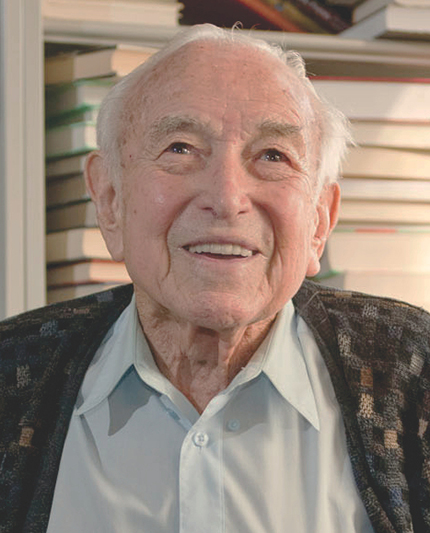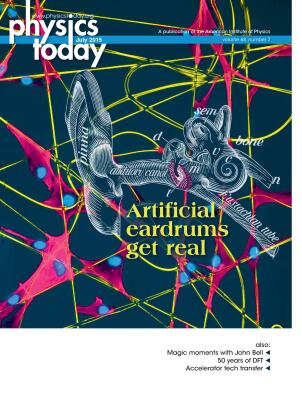Richard Freeman Post
DOI: 10.1063/PT.3.2855
Richard Freeman Post, one of three founders of magnetic fusion energy research in the US, passed away on 7 April 2015 at age 96. Dick developed the electromechanical battery using high-speed-flywheel energy storage and stabilized the battery with his magnetic bearing design, later employed to stabilize magnetically levitated trains.

Richard Freeman Post
JACQUELINE MCBRIDE/LLNL

Dick was a prolific inventor with 34 patents, 9 issued after he turned 90. Starting in 1952 as a leader of mirror fusion research at Lawrence Livermore National Laboratory and later as the lab’s deputy associate director for magnetic fusion energy, Dick contributed three seminal ideas that culminated in 1976 with the 2XIIB experiment, the first demonstration of a mirror plasma at thermonuclear temperatures. Those ideas were the yin–yang magnetic mirror design—developed with Ralph Moir—which provided magnetohydrodynamic stability; 20-keV neutral-beam injectors, with a million times more current than earlier versions, that created a plasma; and the theoretical discovery, with Marshall Rosenbluth, of the drift-cyclotron-loss-cone microinstability mechanism of plasma leakage in mirror machines, which could be stabilized by cold plasma injection. He also invented a method for direct conversion of plasma energy to electricity as a way to improve the efficiency of mirror fusion reactors.
His papers published in 1956 in Reviews of Modern Physics and in 1959 in Annual Review of Nuclear Science were among the first thorough reviews of hot plasmas for controlled fusion. They were immediately translated into Russian, the 1959 paper as a separate book. In 1987 his comprehensive review of mirror research filled the whole October issue of Nuclear Fusion. Despite termination of the mirror program in the US, Dick firmly believed that the mirror fusion approach, with its different physics and engineering advantages, was still worth pursuing. In early 2000 he came up with an idea of a “kinetic stabilizer” for axisymmetric tandem mirrors. At present, sizable groups are working on mirrors in Russia and China.
Dick’s work on magnetically levitated trains was based on the idea that both levitation and propulsion would be provided by simple electrical circuits embedded in the track, whereas the cars would have passive magnetic structures made of specially arranged permanent magnets—so-called Halbach arrays. In 2004 R&D Magazine recognized the approach, which does not require superconductors, with an R&D 100 Award. The work continues, with researchers looking at its possible use as a launch system. Among Dick’s other honors were the American Physical Society’s 1978 James Clerk Maxwell Prize for Plasma Physics and a 2000 Popular Science Design and Engineering Award. He also was a corecipient of Fusion Power Associates’ first Distinguished Career Award in 1987.
Equally innovative were Dick’s studies of magnetic bearings. His creative use of magnet arrays led to geometries in which the bearing would be passively stable, with no need for complicated feedback stabilization. Those magnetic bearings are an integral part of the novel, high-speed energy-storage systems that Dick developed.
Dick was born in Pomona, California, on 14 November 1918 and graduated from Pomona College in 1940. After working at the US Naval Research Laboratory for four years, he received his PhD in physics from Stanford University in 1951. He then joined the Livermore laboratory in 1952, just months after it opened. He continued working part-time at Livermore after his retirement in 1994 until the week before he died.
The epitome of a gentleman—kind, polite, and gracious—Dick had many friends and followers in the international fusion community. He loved the Swiss Alps and, until recently, he and his wife, Marylee, had spent one month each summer in Switzerland. He also became interested in German and would read German novels in the original language.
More about the Authors
T. Kenneth Fowler. University of California, Berkeley.
Dmitri Ryutov. Lawrence Livermore National Laboratory, Livermore, California.
